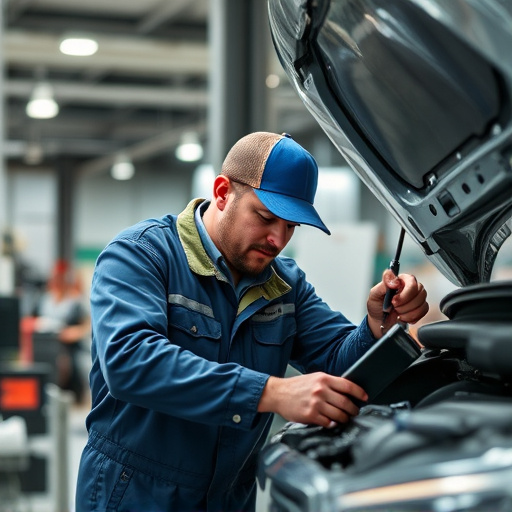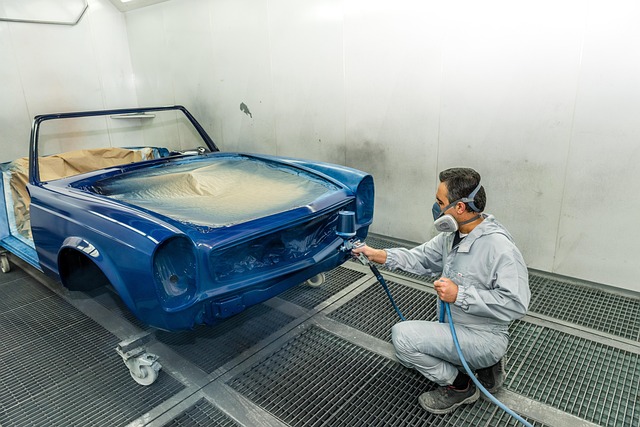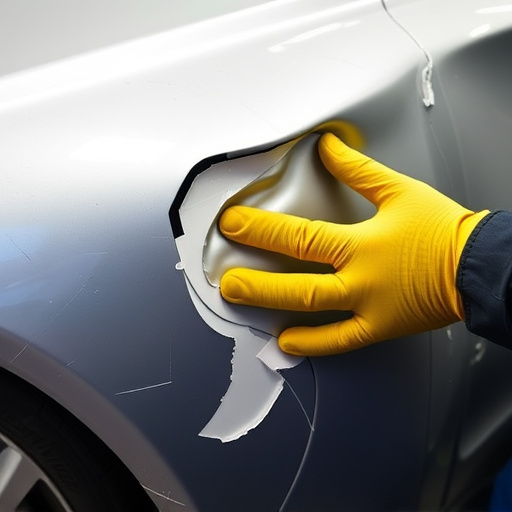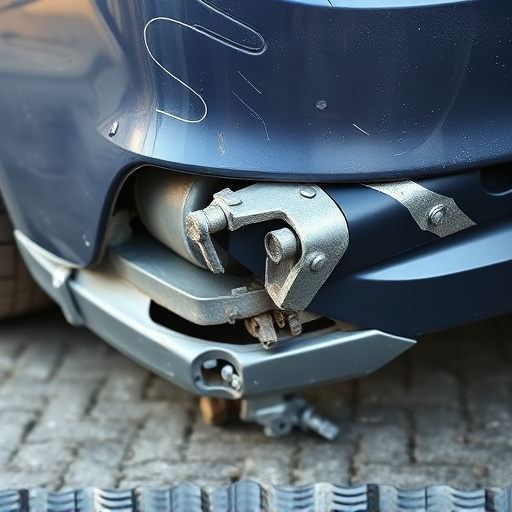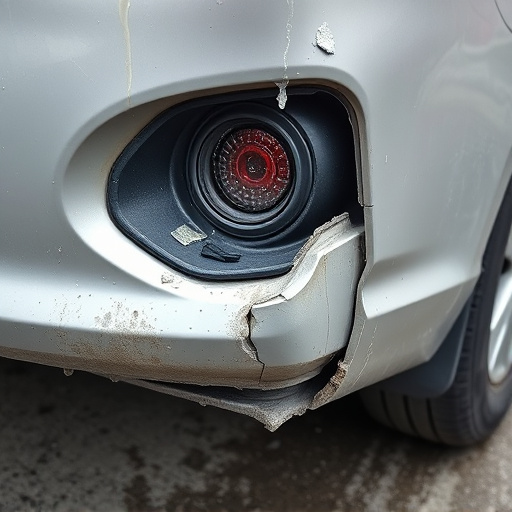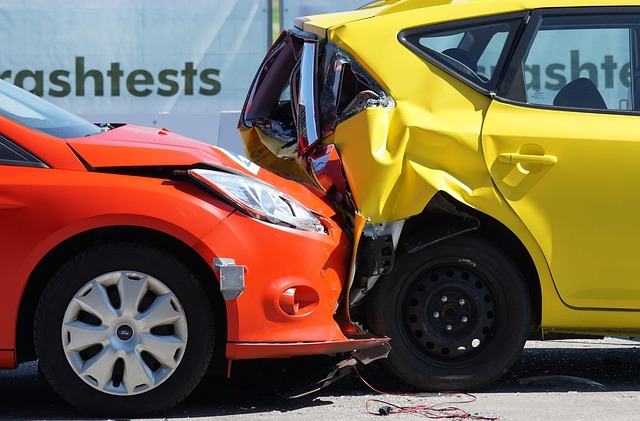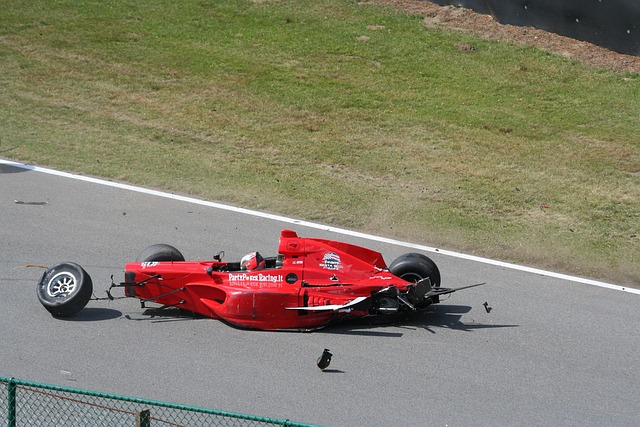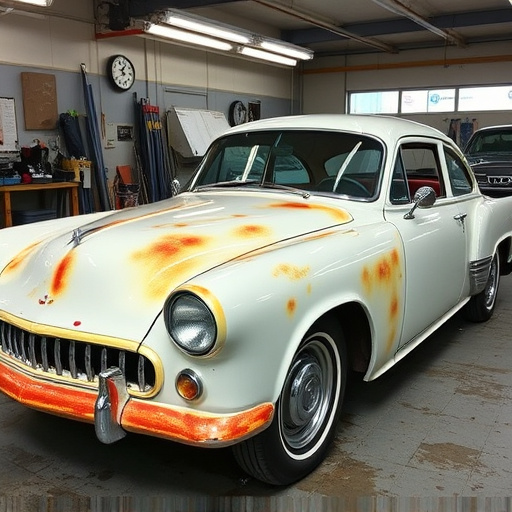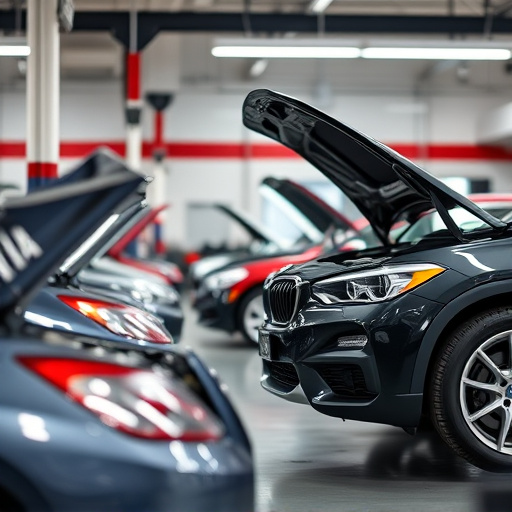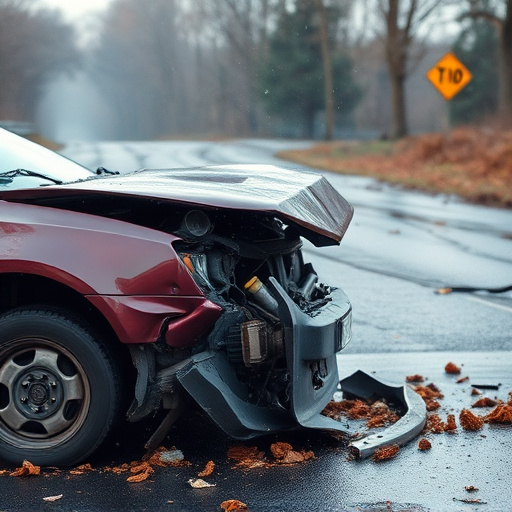Corrosion, a natural metal degradation process, poses significant safety risks in industries relying on mechanical components, particularly in collision repair shops where moisture, chemicals, and airborne contaminants can rapidly corrode critical structures like engine blocks, frames, and joints. Technicians must prioritize corrosion protection measures including proper storage, regular maintenance, and use of protective coatings to ensure safer working conditions and extend equipment lifespan. Specialized gear such as protective garments, safety goggles, ear protection, precision spray guns, moisture meters, and corrosion-resistant materials are essential tools for effective corrosion protection. Regular vehicle inspections for signs of corrosion, adherence to proper cleaning and coating procedures, and regular tire services contribute to overall corrosion prevention.
In the realm of industrial maintenance, corrosion protection is paramount for technicians to safeguard equipment and ensure operational continuity. This article guides you through essential aspects of corrosion protection safety protocols, delving into its profound impact on machinery and infrastructure. We’ll explore vital tools, protective gear, and best practices that empower technicians to mitigate corrosion risks effectively. By adopting these strategies, organizations can extend equipment lifespans, minimize downtime, and promote a safer working environment.
- Understanding Corrosion and Its Impact on Equipment Safety
- Essential Tools and Gear for Corrosion Protection
- Best Practices for Technicians to Mitigate Corrosion Risks
Understanding Corrosion and Its Impact on Equipment Safety
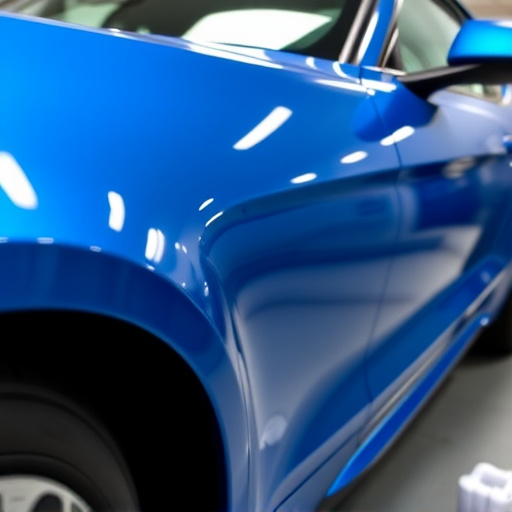
Corrosion is a natural process that occurs when certain materials, particularly metals, react with substances present in their environment, leading to degradation and strength loss over time. This phenomenon can significantly impact equipment safety, especially in industries where mechanical components are essential for operation. For technicians working with machinery or vehicles, understanding the mechanisms of corrosion and its effects is crucial for implementing effective safety protocols.
In a collision repair shop or during car body repair, metal parts exposed to moisture, chemicals, or airborne contaminants can corrode rapidly, compromising structural integrity. This is particularly concerning in critical components like engine blocks, frames, and mechanical joints, where corrosion can result in unexpected failures, leading to hazardous situations. By recognizing these risks, technicians can prioritize corrosion protection measures such as proper storage, regular maintenance, and the use of protective coatings or treatments, ensuring safer working conditions and extending equipment lifespan.
Essential Tools and Gear for Corrosion Protection
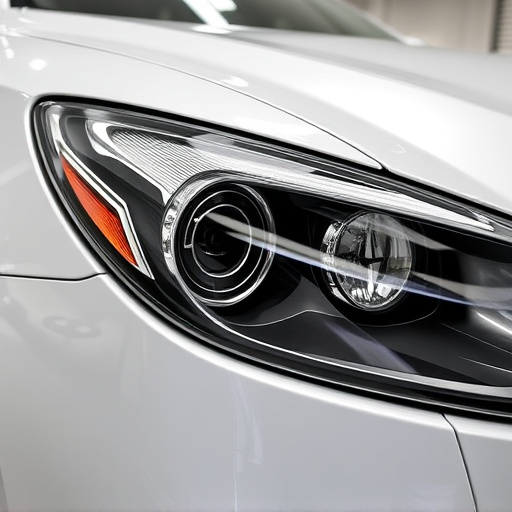
In the realm of corrosion protection, technicians require a robust arsenal of essential tools and gear to effectively safeguard against rust and decay. At the forefront of this defense are high-quality protective garments, including specialized suits, gloves, and respirators designed to shield workers from hazardous chemicals and dust particles that contribute to corrosion. Furthermore, investing in top-tier safety goggles and ear protection is paramount, as these barriers prevent potential injuries while ensuring clear vision and auditory awareness during the repair process.
For technicians engaged in vehicle collision repair or fleet repair services, the need for corrosion protection cannot be overstated. Just as car paint repair demands meticulous attention to detail, so too does the application of protective coatings and sealants. By utilizing advanced tools such as precision spray guns, moisture meters, and corrosion-resistant materials, technicians can ensure long-lasting results, preserving the integrity of vehicles and minimizing future maintenance costs for clients.
Best Practices for Technicians to Mitigate Corrosion Risks

Technicians play a pivotal role in ensuring corrosion protection safety protocols are effectively implemented and maintained. To mitigate corrosion risks, best practices include regular inspection of vehicles for any signs of existing corrosion or damage, especially in vulnerable areas like wheel wells and underbody components. Using appropriate personal protective equipment (PPE), such as gloves and respiratory masks, is essential when handling corrosive materials or working in environments with high humidity levels.
Additionally, technicians should adhere to proper cleaning and coating procedures. This involves thoroughly washing vehicles to remove dirt, salt, and other contaminants that accelerate corrosion. Applying high-quality rust preventatives and coatings specifically designed for automotive use can create a protective barrier against moisture penetration. Regular tire services and maintenance of wheel alignment also contribute to corrosion prevention by reducing curbing damage and ensuring even wear patterns on tires, which minimizes exposure of metal components to corrosive elements in the car repair shop or collision repair services environment.
Corrosion protection is paramount in ensuring equipment longevity and safety for technicians. By understanding the impact of corrosion and adopting best practices, professionals can significantly mitigate risks. Investing in essential tools and gear specifically designed for corrosion protection is a crucial step towards maintaining high-quality standards. Technicians should remain vigilant and follow safe protocols to prevent costly damage and ensure their well-being in environments prone to corrosion.


